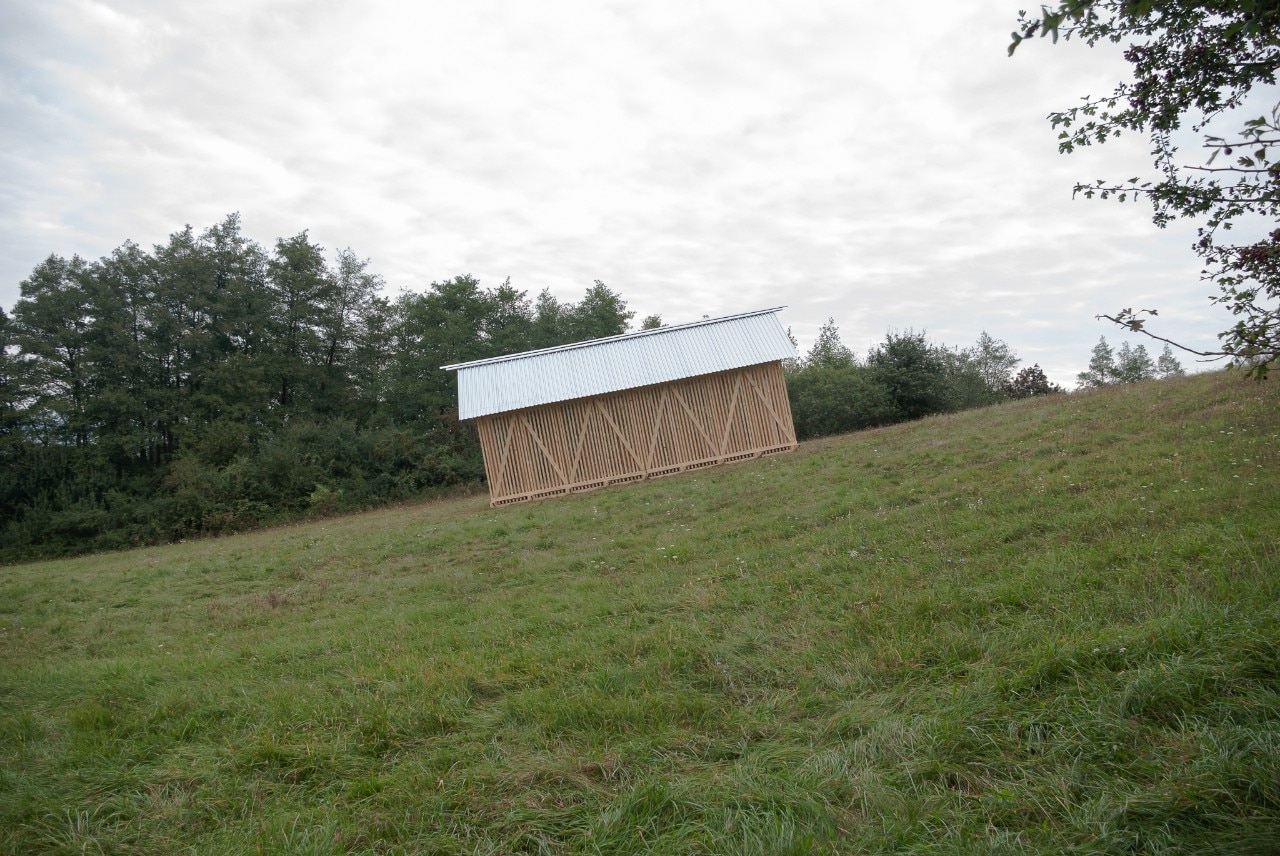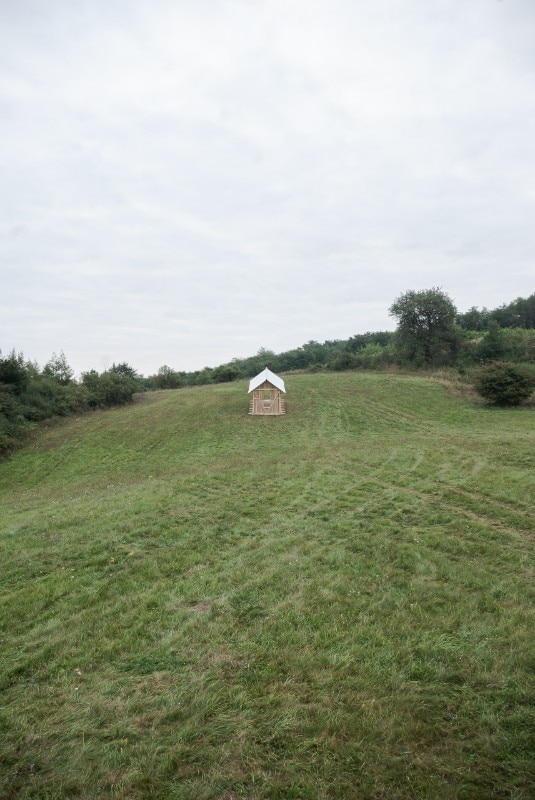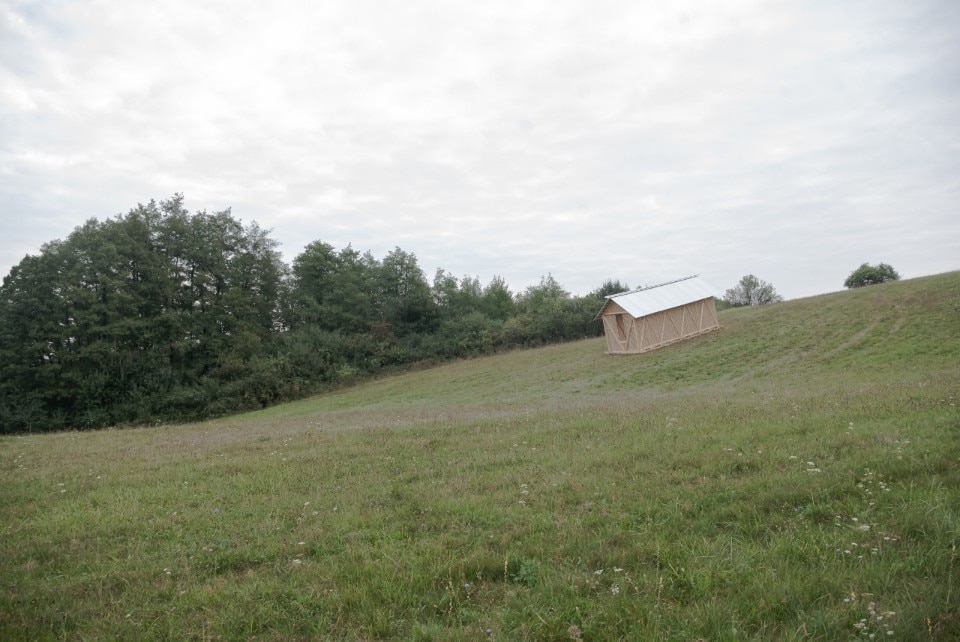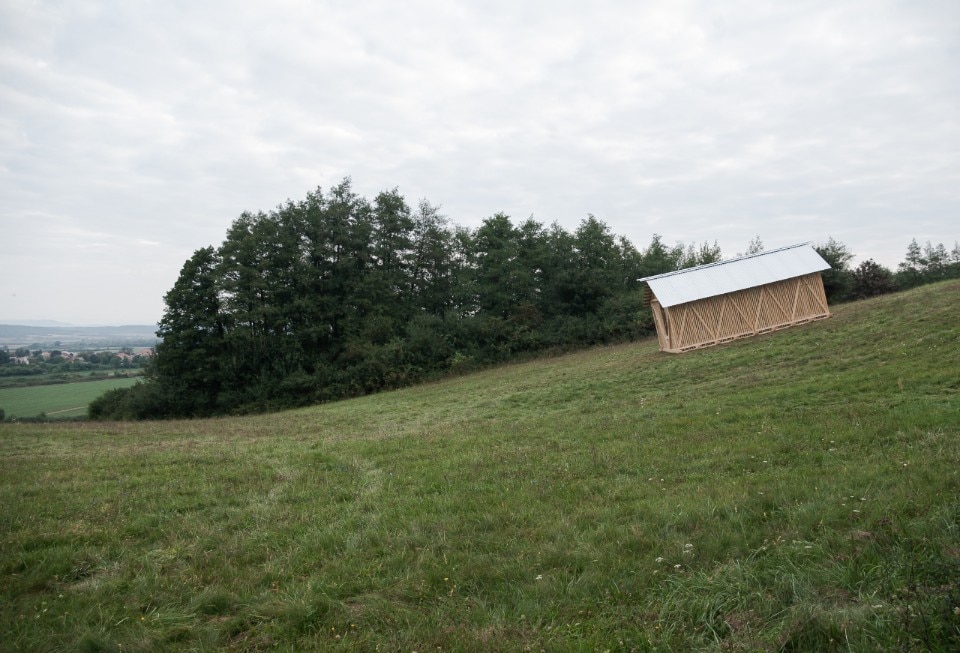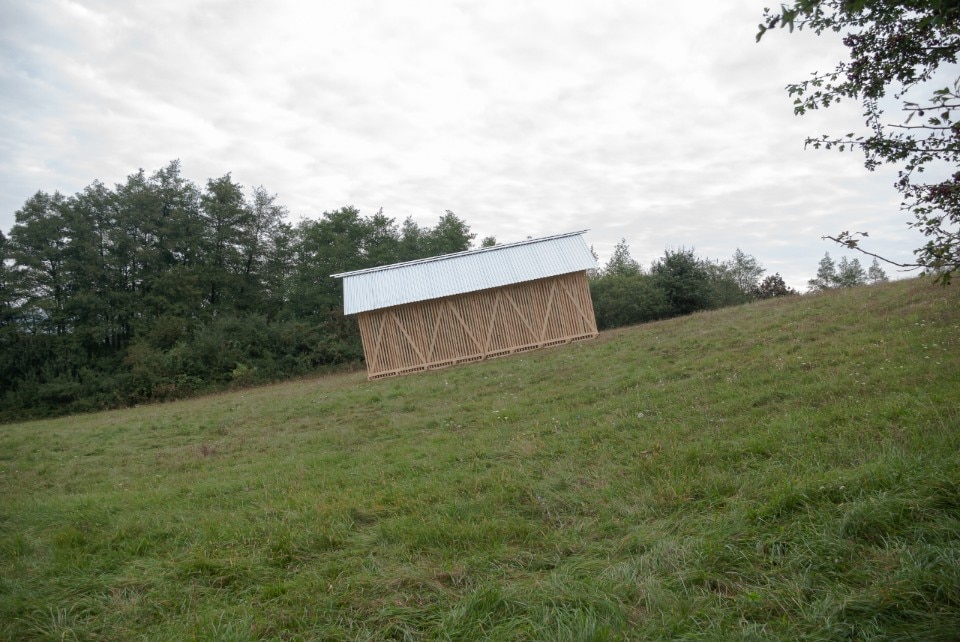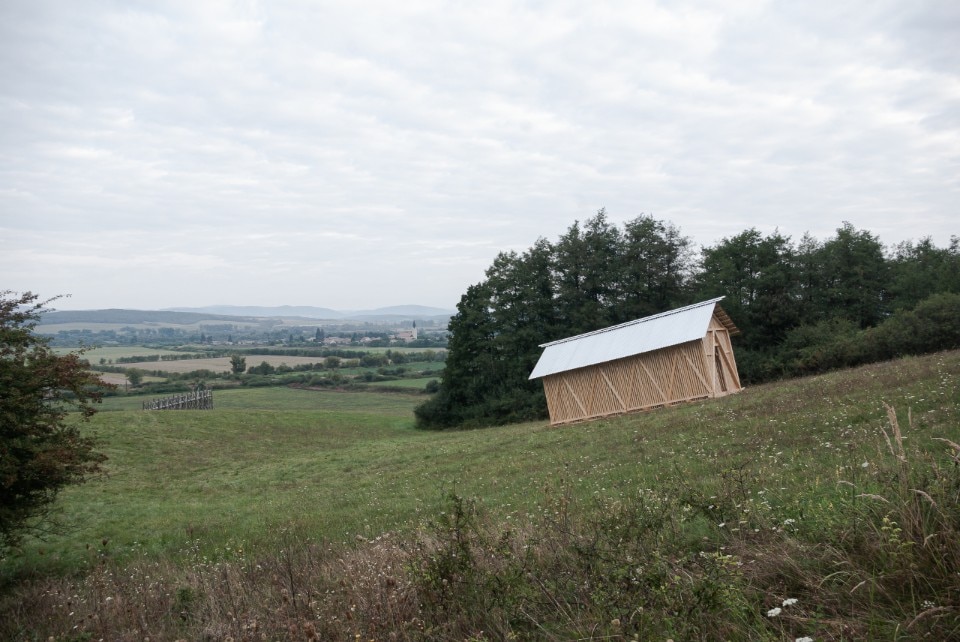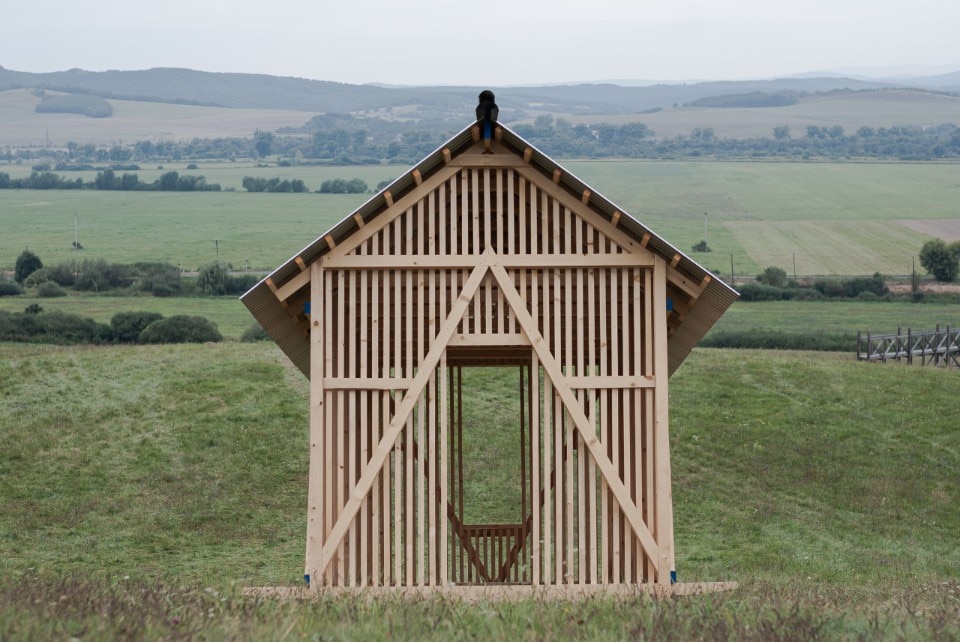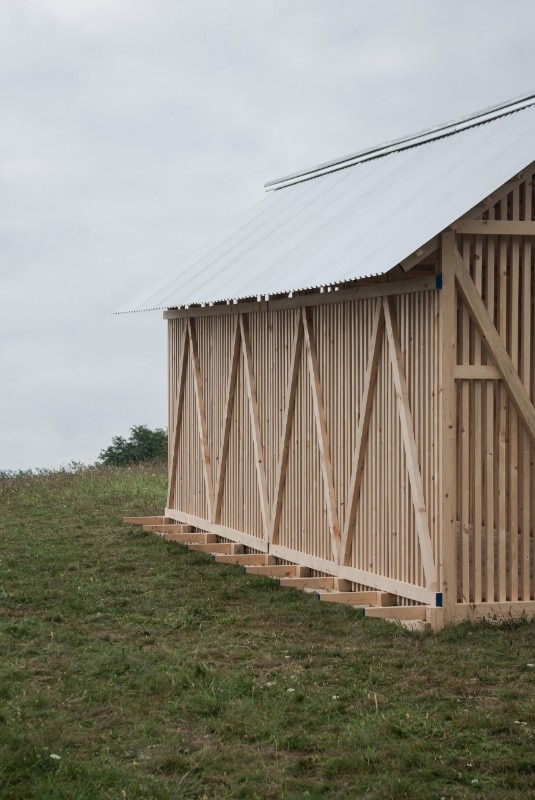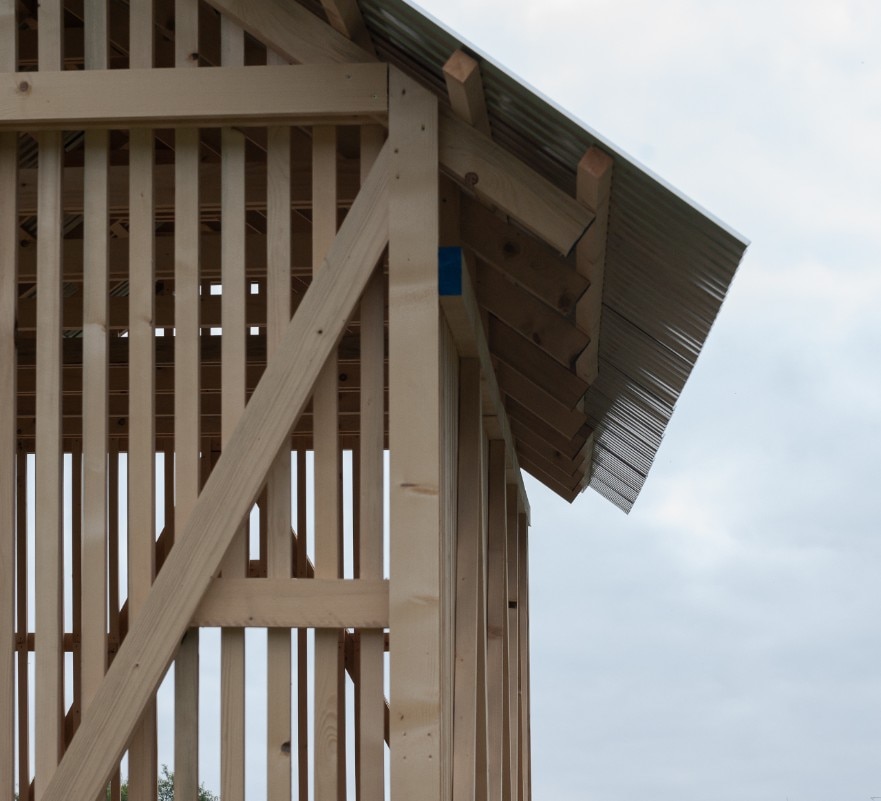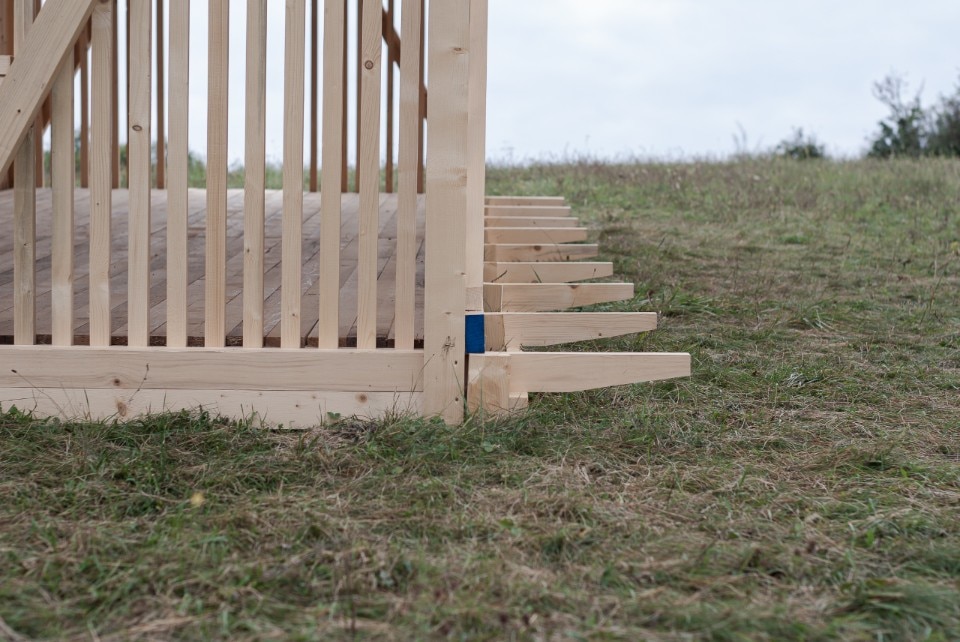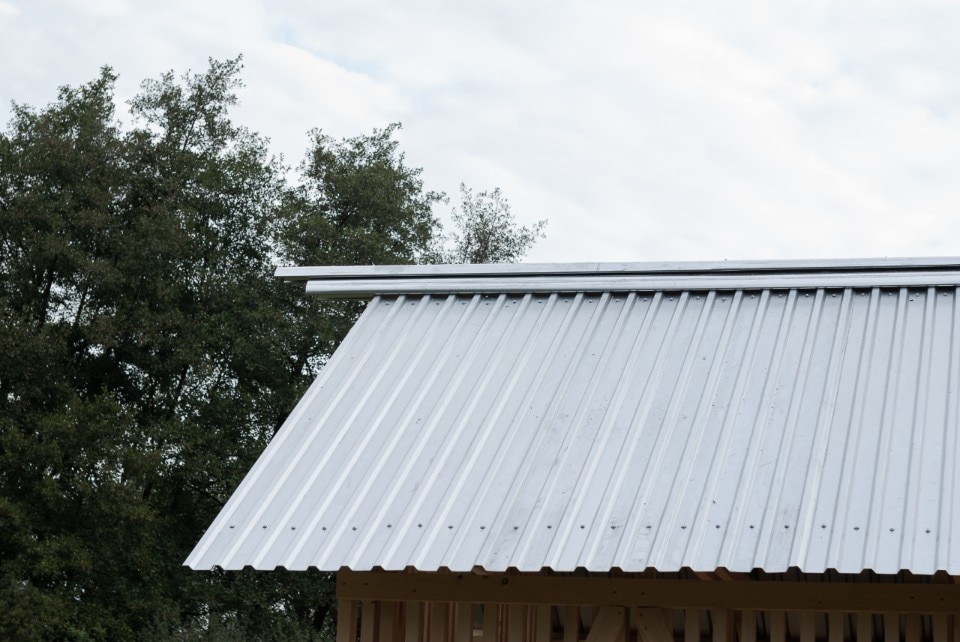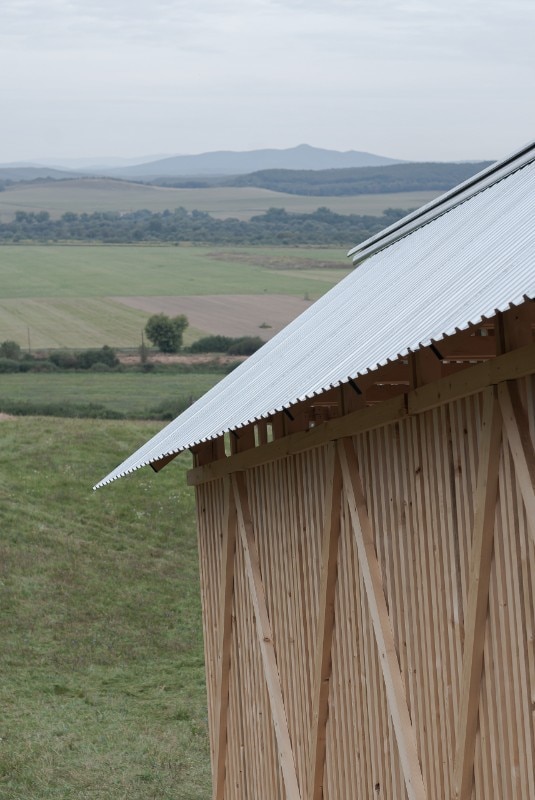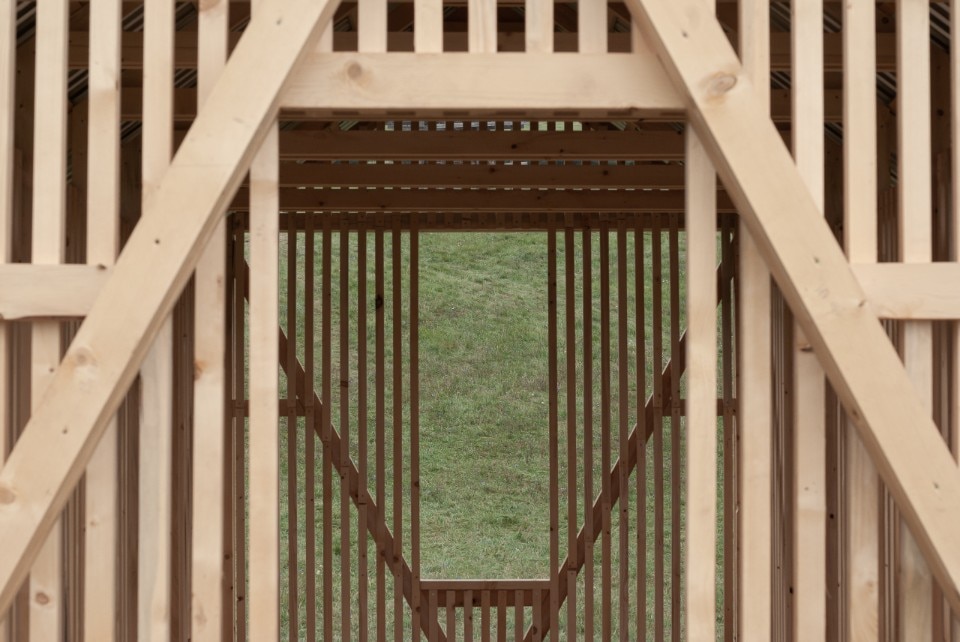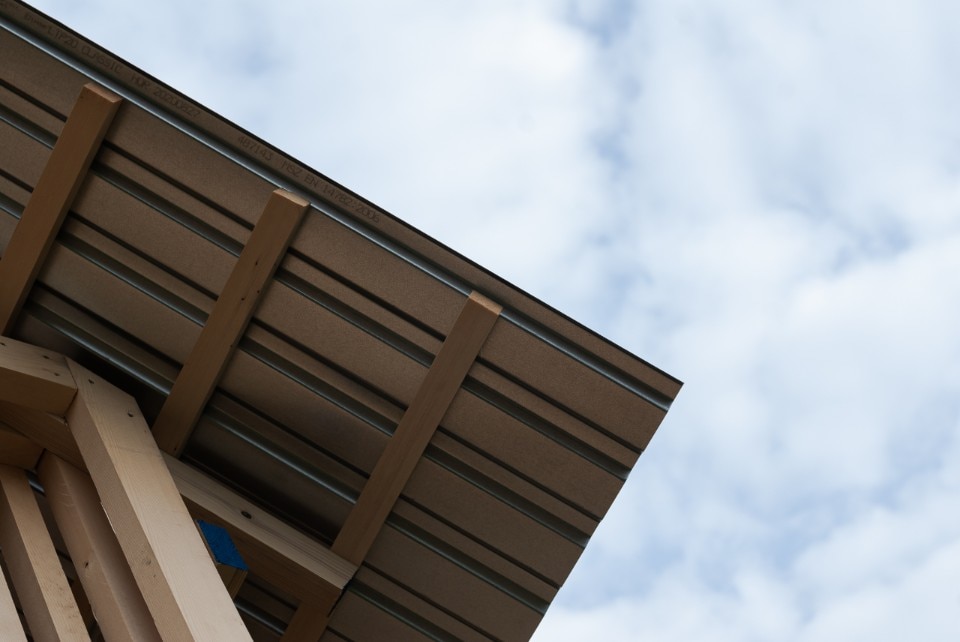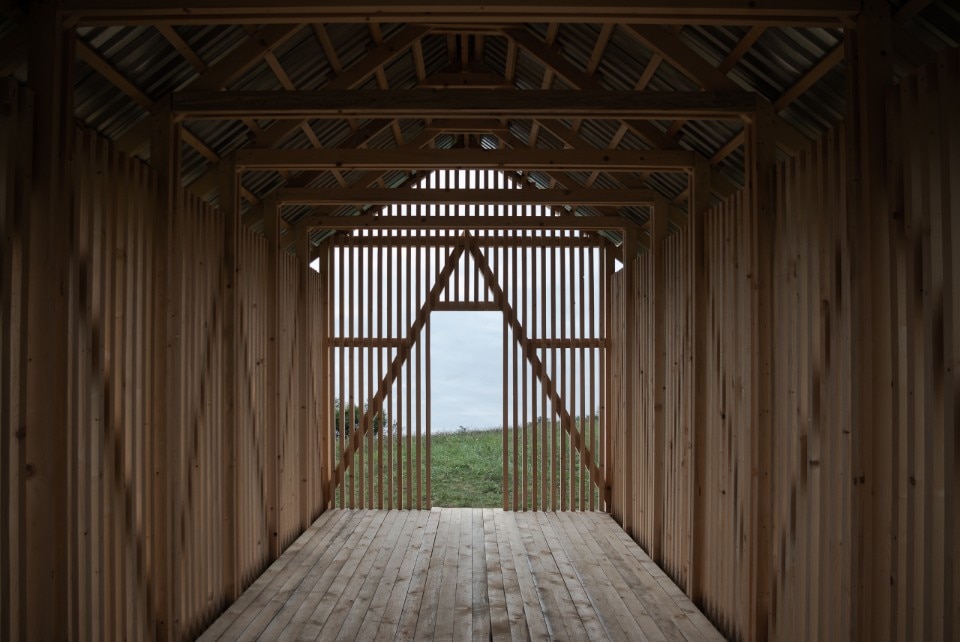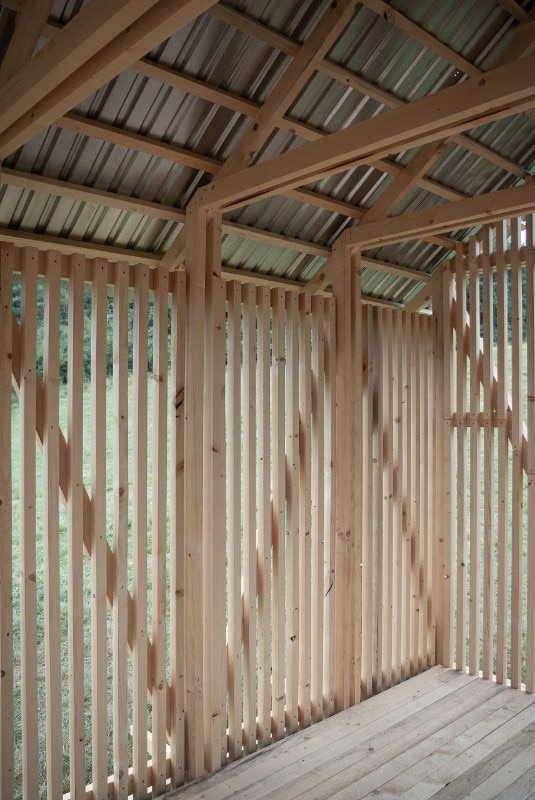British critic Kenneth Frampton published the essay “Towards a critical regionalism: six points for an architecture of resistance” in 1983 on Yale University's journal, Perspecta, where he spoke out against the universality of modern and post-modern architecture. With critical regionalism, a position striving for a form of cultural, economic and political independence of architecture in a globalised reality, Frampton argues that according to the specific conditions of a local context, a new architectural approach can be developed: the tactile can surpass the visual and irony can be replaced by authenticity and materiality.
Slanted House, Paradigma Ariadné’s installation for 100 Sparks Artweek in Hungary, is based on this concept. The architecture studio emphasizes the relation between house and landscape mentioned by Frampton with a wooden structure that abandons horizontality, focusing not on humans but on the territory. The construction itself followed the logic of the landscape and its slope to achieve stability.
The structure encourages a debate, wondering whether it can fully represent Frampton’s critical regionalism, considering the fun and irony it inspires.
- Project:
- Slanted House
- Location:
- Ipolytarnóc, Hungary
- Program:
- Installation
- Architects:
- Paradigma Ariadné
- Team:
- Lilla Árkovics, Bernadett Csendes, Attila Róbert Csóka, Imola Zsóka Fazakas, Csenge Kiss, Virág Kiss, Szabolcs Molnár, Dávid Smiló
- Event:
- 100 Sparks Artweek
- Completion:
- 2020


